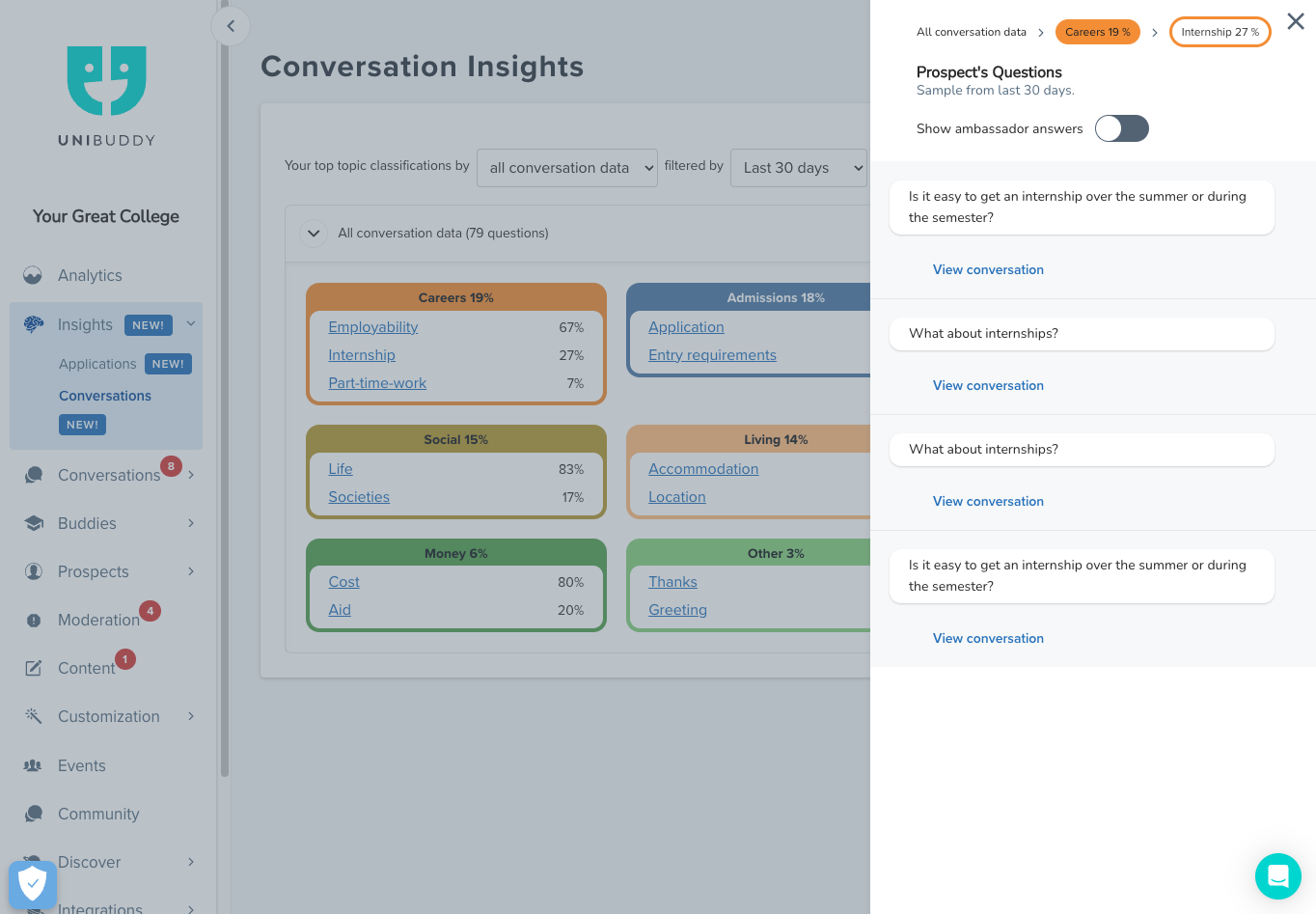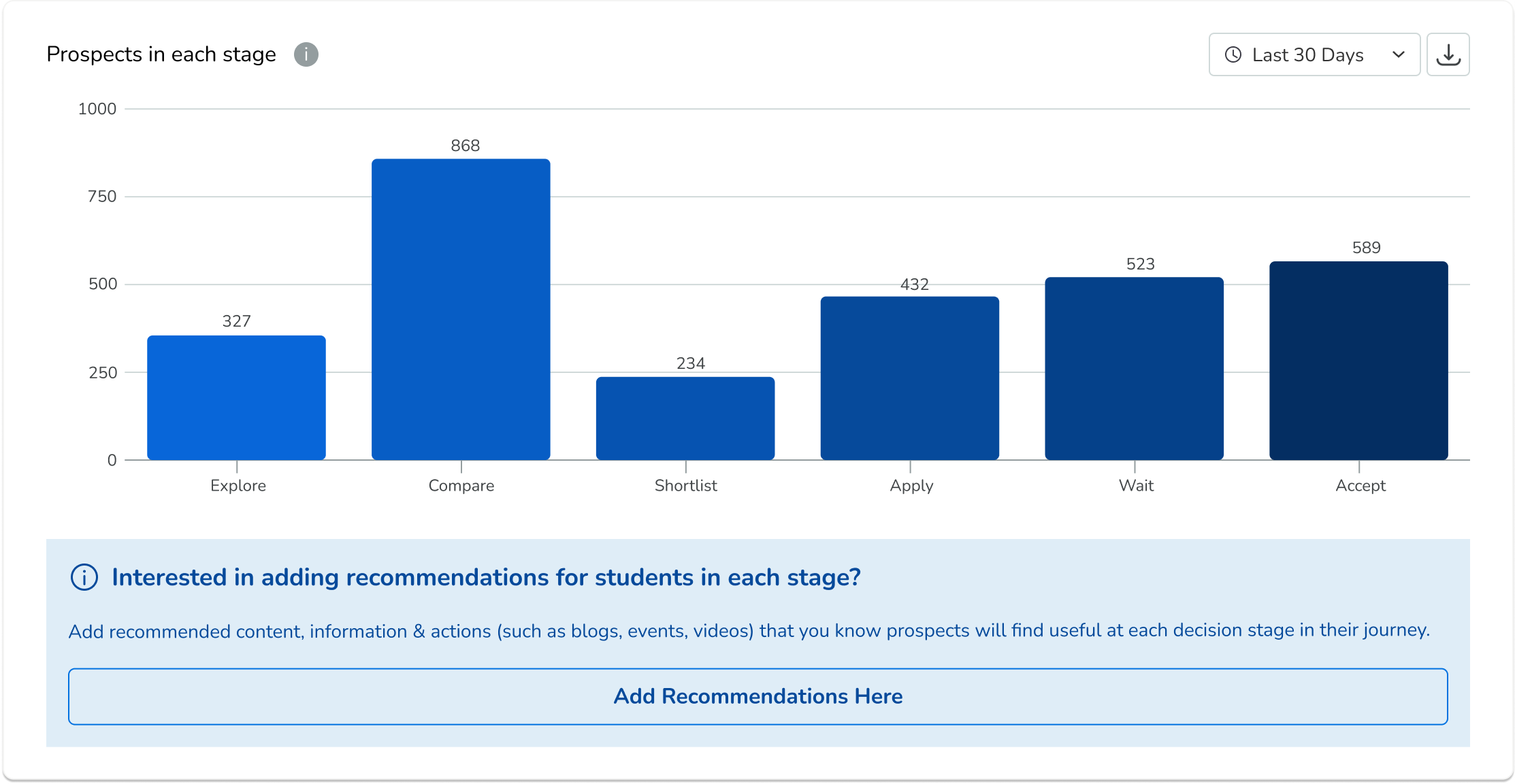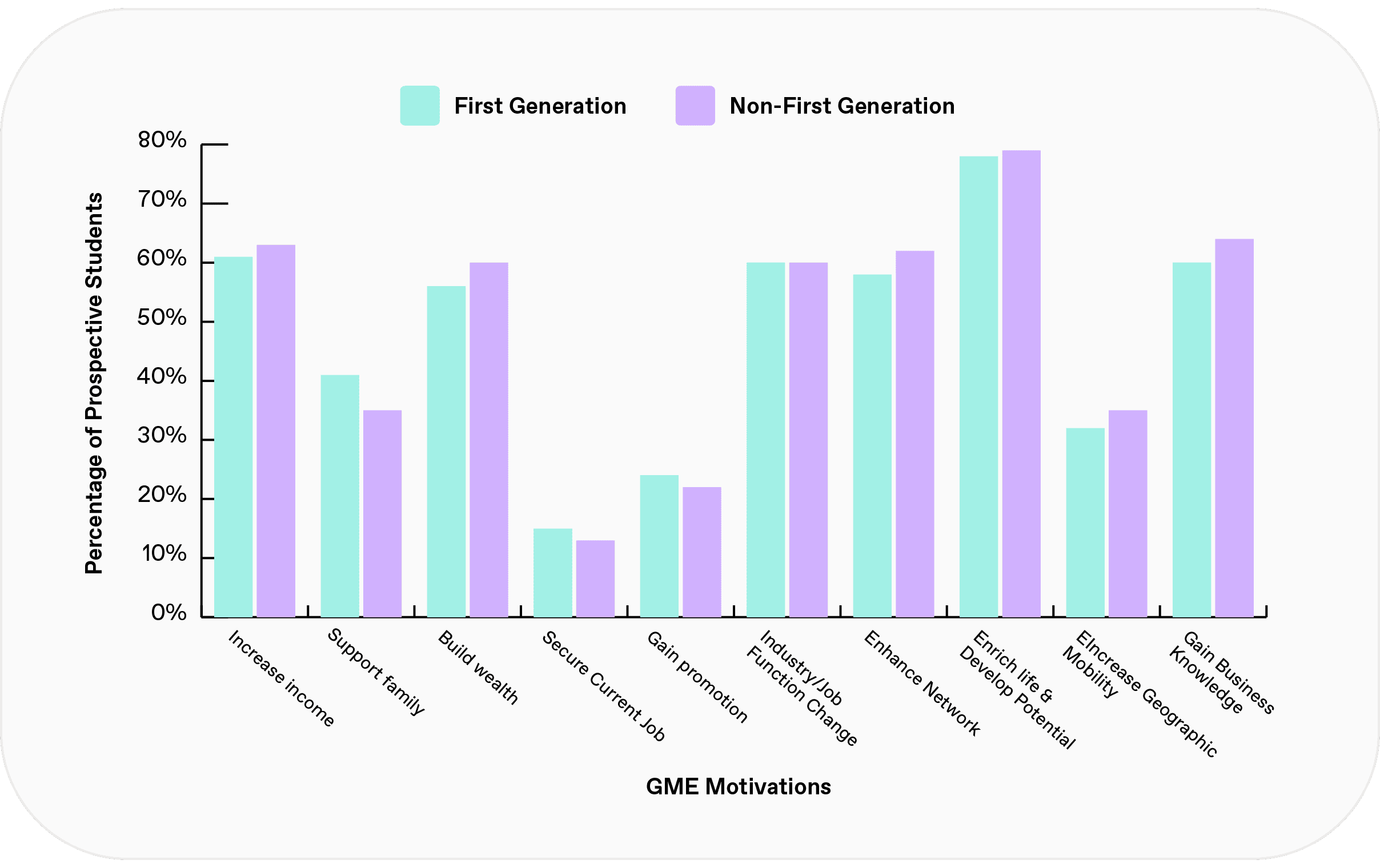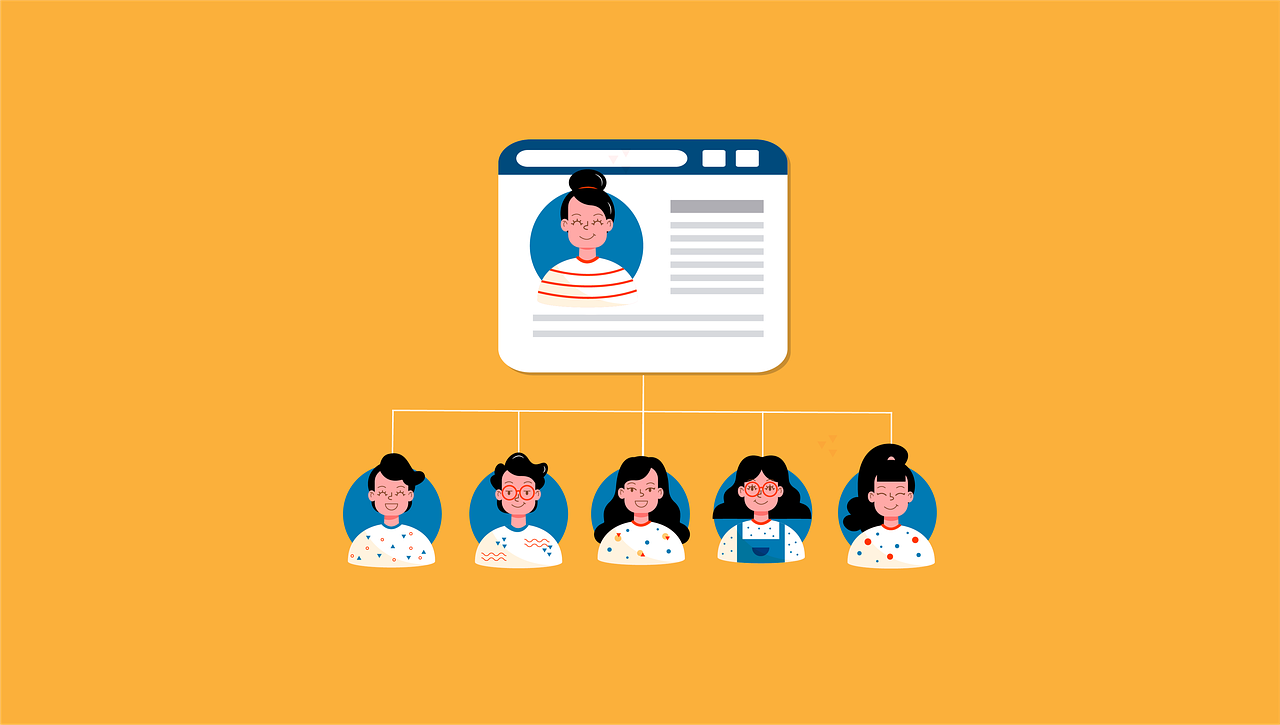How Higher Ed Tech Helps Boost Student Diversity

Overview
For enrollment teams at higher ed institutions, raising student diversity is a good way to make a positive impact – making higher ed a reality for every student regardless of circumstances. And, as competition for student pools increases in tandem with ongoing digital adoption, engaging more diverse groups of prospective students has the added benefit of enabling your team to expand beyond more traditional catchments.
But where do you begin to engage, and subsequently nurture and convert more diverse student pools? While more traditional audiences might immediately engage with your messaging, diverse groups often have different wants, needs, and motivations when it comes to choosing where to study. These factors can be rooted in a whole variety of socio-economic conditions, challenges unique to first-generation students, disabilities, sexual orientation, religious or ethnic considerations, and geographical barriers, both domestic and international.
A common theme which bubbles up is how to enable better access to the messaging you provide and how to nurture more diverse groups towards higher levels of trust – trust that they can succeed and have a place at your higher ed institution.
In this piece, we discuss how a combination of digital nurturement tactics, available higher ed data, and effective edtech tools, can help your team increase your reach to engage with more diverse prospective student audiences.
Leveraging digital solutions for better higher ed access
Foster authentic higher ed connections
According to a recent Unibuddy pulse survey report, ‘A Radical Rethink: The Future of Admissions, Recruitment, and Marketing,’ 38% of prospective students do not apply to higher ed schools who do not share their values. This is where the value of forming virtual student communities comes into play – helping students “find their people” prior to setting foot on campus. In fact, 77% of students say connecting with their fellow incoming class prior to arrival is helpful in making them feel confident in their choice. For diverse groups of students, this is also an opportunity for them to find others who share their unique situation and understand their needs.

The University of Leicester, for example, wanted to help students engage better through their ‘HeadStart’ program – a program designed to quell doubts and keep students warm over the volatile summer melt period. Using Unibuddy Community as part of this program, Leicester was able to connect students from every background to their incoming classmates within an interactive environment. As a result of their use of Community to foster student pre-arrival engagement, the school saw an attributable 23% enrollment boost.
Engage diverse student ambassadors
Conversations with real students are often what will get prospects to take the next step toward conversion. In fact, 92% of students report making enrollment decisions after just speaking with a student ambassador.
For diverse students, especially, hearing directly from others who have lived their experiences is crucial. Making connections between prospective students from diverse backgrounds and student ambassadors from similar circumstances can serve as a crucial bridge to earning trust. In addition to meeting someone who has walked in their shoes, can authentically answer their questions, and understands their unique situation, speaking with a student ambassador with a similar diverse background demonstrates to a prospective student that they have a place at your higher ed institution.

In order to effectively leverage diverse student ambassadors, ensure you provide digital means for prospective students to connect with them. From rich digital profiles to user-generated content speaking to their experiences to P2P chat solutions enabling one-on-one anonymous conversations, consider peppering your student ambassadors’ presence across all your digital assets – from emailers to your website to your online communities of students. Not only does establishing digital presence enable better access to information about your school, but it demonstrates your commitment to instilling diversity at your institution.
But digital solutions also need to be multi-dimensional in order to be effective. In addition to providing direct lines for prospective students to chat with student ambassadors, for example, a successful chat tool provides your team with the data your team needs to further hone and personalize messaging to specific diverse pools of students. This data, like Unibuddy’s conversational insights, helps your team understand how new pools of students are similar, or different, from more traditional audiences.
Offer hybrid higher ed events
When students can’t visit, they can’t have their questions or concerns addressed, so it’s critical to use digital solutions which help them overcome any barriers that might be standing in their way. Over a quarter of prospective students from lowest income families, for example, report not having plans to visit the campuses they apply to prior to application.
Virtual campus tours and Q&A sessions are great places to start. When done well, they allow students to envision themselves on campus without needing an in-person experience. This is an especially important part of boosting access to your campus for students who may lack the means, geographical proximity, or confidence to physically visit your campus.
Related: The digital future of higher ed campus tours and events
Infusing student diversity into your higher ed funnel
Start the right conversations about higher ed
As you know, starting the conversation with any prospective student is a delicate dance. Through leveraging available data, you can create a clearer picture of who they are, what matters to them, and what potential barriers might be standing in their way. Doing so will help you avoid creating generic messages that don’t grab their attention or, worse, make them feel as though you don’t want to get to know them on a personal level.
Using the right edtech tools, from your website to a peer-to-peer chat solution, can give you a clear insight into the things that matter most. Insights can enable you to segment by location, interests, area of study, and even funnel position. That means you’ll know exactly how to engage each prospective student, even if they do not belong to your more traditional student pools.

Unibuddy's conversational insights can also provide sample questions of what students are asking
Also consider the language you use on each platform, whether it’s your website, social media, or email. Using the correct voice and tone can be key in keeping prospective students engaged, especially those with diverse backgrounds. As you work to define your brand’s voice, try to make it light, friendly, and welcoming, rather than cold and institutional, which can often read as inauthentic and stiff.
It’s not as hard as it might seem to strike that balance. For instance, your website might read as laidback and approachable while your social media is filled with current trends.
Most importantly, prospective students only want to get emails when you have something interesting and relevant to say. They want highly personalized, targeted emails.
Consider your on-campus clubs and activities, and use them to your advantage. Send movie buffs information about your Bad Movies Club, connect Dungeons & Dragons players with the campus dungeon master, or craft lovers with the crochet club.
Sure, these are just examples, but who wouldn’t want to learn about those clubs? After all, clubs create inclusive environments that provide students with a place to meet and bond with like-minded people.
The truth is that even though engaging language and personalization are important, most higher ed institutions aren’t leaning into them. Instead, they’re using run-of-the mill language that students who have diverse backgrounds and interests end up seeing over and over again. When the language sounds the same across the board, it becomes difficult to stand out – or land with any audience, especially those who aren’t what you would consider to be your traditional student personas.
Help prospective students make the right decision
Once you’ve helped a prospective student move past the initial awareness conversations, the next step is to understand what information they need to make an informed decision about where to study.
For a majority of students (92%), speaking with a student ambassador drives them to make a final enrollment decision. This is especially important for diverse students, who want to hear from someone whose background and experience is similar to their own.
That sort of connection is crucial because while a higher ed enrollment professional could always guess at what the student experience is, ambassadors can share it authentically and without an agenda. That’s what allows prospective students to develop a sense of trust and confidence in your institution.
But, while chat tools are a great way to connect prospective students to your ambassadors, why stop there? You can use it to connect them to faculty, staff, and alumni as well. By connecting prospects to all parts of your institutional community, you’re helping propel them forward in their decision-making process, while also easing the burden on inboxes.

Unibuddy's AI-infused data sorting features show where your students fall in your enrollment funnel
But it’s not just good for prospective students: an effective chat platform offers your team conversational insights showing what’s being talked about most by course and location. You can go even further and determine when students are talking about certain topics. AI-powered data-sorting features can be leveraged to summarize long conversations so you can understand exactly what a student is thinking about and where they are in the funnel.
In addition to faculty, staff, and students, consider giving any prospective students who can’t visit an opportunity to tour your campus virtually or participate in online Q&A sessions. Doing so will help diverse students feel more comfortable stepping onto campus for the first time, regardless of their unique situation.
Keep the conversation going
Melt – the post-enrollment period in which universities lose students – is a threat that’s all too real for higher ed admissions and recruitment teams. Our research shows that experiences like making friends and job opportunities play a big role in it.
But it is avoidable if you continue to nurture the students who have already committed. In fact, students told us that more information and administrative support would have addressed their questions and concerns. That’s true for every type of prospective student, whether they’re a first-generation attendee or a graduate student.
So, when a student enrolls, don’t assume that your work is done and it’s time to go radio silent until they show up to campus. Instead, keep the conversation going by providing relevant information and the space for them to ask any questions they have.
But what’s even more crucial for avoiding melt? Student-to-student connections. Not only do 94% of higher ed recruitment professionals say they’re essential, but so did 51% of the students we surveyed.

Establishing student-to-student connections is crucial for enrollment
This is where post-enrollment community-building hub-style forums can help.
Made up of message boards, or groups, higher ed community platforms allow students to get to know each other. Each group can be based on something the members have in common, whether it’s location, major, or general interests.
This is a critical puzzle piece of the higher ed journey. From the very beginning, they’re so worried about making friends, fitting in, and finding their way that some would rather abandon the journey altogether.
But creating an environment in which they can get to know each other will help them find their people before they’ve even stepped onto campus.
And who doesn’t want to have that same sense of belonging?
This is especially true for diverse and international students, 61% of whom want to connect with other current and incoming international students.
For example, when Indiana University set out to create a space for connecting international students, via Unibuddy Community, they saw a bump in engagement with students in India. Before even arriving on campus, the group’s 83 members had exchanged more than 1,000 messages, fostered authentic connections, and cultivated a sense of belonging. For admissions and recruitment teams, engagement at this scale demonstrates considerable ROI.
Consider what graduate students need
It’s important to remember that not all students need the same thing, especially graduate students. Barriers for diverse graduate students can be compounded further by external forces – more first generation graduate students, for example, are already supporting families at home and do not have financial backing readily available.
Not only are they more likely to already know what they’d like to study and where, but they also need more work-life balance, a different kind of schedule to help support their other commitments, and more networking opportunities.
Stay authentic and engaging when you engage with them, but be careful about who you introduce them to. Don’t just push them onto any student ambassador. Instead, allow them to speak directly to someone about the program they’re interested in, such as a current student or relevant faculty member. This will keep them engaged and help them make a decision faster.

Motivations for first-generation grad students vary
Of course, engaging graduate students calls for a different approach than with undergraduates. They’re far more likely to know what they want to study and, most of the time, where they want to do so.
But that doesn’t mean they don’t have their own drivers, barriers, and needs, such as work-life balance and networking opportunities. With that in mind, stay authentic and engaging, but be very careful about who you connect them with. Focus on introducing them to someone like a current graduate student ambassador or relevant faculty member.
Three ways edtech tools can help diversity efforts
They give you more valuable data
Data is critical to any recruitment team’s success. And sure, the traditional recruitment CRM dashboard can give you a look at things like where your students are from or where their general program interests lie.
But they don’t tell you who your potential students really are, much less what matters the most to them or what their barriers are. Without that insight, your recruitment team is left trying to guess what their experiences might be like, which leads to inauthentic messaging – or, worse, blanket messaging that doesn’t resonate with anyone.
Knowing where to get and how to leverage data will allow you to find ways to recruit students outside of your traditional prospective student persona.
After all, many recruiters look solely in the spots they know they’ll find students – the “safe” spots. Sure, taking a chance on areas where potential might lie seems risky, but when you find untapped parts of your territory and can use technology to engage with students there, the payoff is immense.
Let’s say you’re a large liberal arts school in the American Northeast trying to reach students in the West. Who’s your audience? Where are they on their journey? Which part of the funnel do they come in at, and at which stage do they melt away?
You could either a) try to come up with messaging that might be relevant to those students, b) send out a generic email blast that doesn’t feel tailored to anyone, or c) use data to get to know your prospective students even better.
It’s a no-brainer.
With the right data, you’ll be able to better understand students who don’t fit into your typical student persona and find ways to engage and nurture them more effectively.
That’s where edtech tools, ranging from chat solutions to community-building platforms, can help. Not only can the data gathered by these tools empower you to see where any given student is in the recruitment process, but it can also be segmented by location, funnel position, interests, and areas of study.
That means you’ll know exactly what matters to students from all backgrounds and locations and be able to create messaging that not only makes your school a realistic option but also a top choice.
For instance, let’s imagine that your liberal arts school typically reaches out to students from other Northeastern states. They’re your traditional student audience, and you know exactly how to connect with them in a meaningful way.
But now you’re trying to recruit first-generation students from states like Colorado or Idaho. Not only are they from outside of your typical target area, but they’re also the first in their families to pursue higher education and might have unique barriers before them.
With edtech tools, you’ll learn what matters most to them, including anything that’s holding them back or has them excited. From there, you’ll be able to effectively tailor your messaging to their experience and make attending your school feasible for them.
But edtech tools aren’t just for higher ed admissions and recruitment teams – they’re powerful tools for marketing and student success teams, too.
When given the power to access high-quality data at the push of a button, your marketing team will learn exactly how to engage with your most diverse audience. For instance, conversational data between prospective students and student ambassadors, available through peer-to-peer chat tools, allows you a clear view of what your prospects are talking about and what matters most.
With Unibuddy’s dashboard, for example, you can get granular data that can be sorted by location, stage of the funnel the student is in, and their program interests.

Unibuddy offers a robust granular set of analytical tools for better student visibility
This is most important for the comparison stage, in which students weigh institutions against one another because the data will show the team exactly what is and isn’t working. From there, they can adjust accordingly.
Related: New Unibuddy Updates Help You Know Higher Ed Students Inside Out
Student success teams can use edtech tools to determine exactly how well those strategies are working. Through drilling down further into available data, these teams can filter the data to a granular level, allowing them to see a student’s confidence level in their enrollment decision and provide insights into how to increase that metric.
They bolster digital authenticity
Unibuddy data shows that when it comes to choosing a higher education institution, incoming students need to feel a sense of authenticity. They no longer want to receive marketing pushes like generic emails or other mass communications. More importantly, they don’t put up with it.
In our recent survey, one respondent said that too many blanket emails sent a message that the university wasn’t interested in getting to know them on a personal level. Another said they caused them to write the institution off entirely.
That means you’ll need to be able to speak to your prospective students’ unique situations, regardless of what their enrollment barrier is, whether they’re coming from a challenging socioeconomic situation, have a diverse background as a first-generation student, or might be working around a professional schedule. The data and insights that effective edtech tools provide allow you to tailor your approach and interact using conversation starts that are relevant and interesting to them.
Most importantly, edtech tools allow prospective students to make genuine and authentic connections with faculty, staff, and students. This is important because, as consumers, they trust their communities and want to hear from peers who are speaking directly to them without an agenda.
That’s where your student ambassadors shine.
No longer are they limited to your social media accounts. Edtech tools should offer easy ways to connect ambassadors to prospective students and get your message out there without sounding scripted or, worse, generic.
This is especially important to keep in mind when trying to build a diverse student audience.
Whatever a student’s unique situation might be, speaking directly to someone who has been where they are and walked in their shoes – someone who really gets it – makes all the difference.
For example, a first-generation student might doubt the possibility of making higher education a reality. But giving them access to other first-generation students who are finding success can make all the difference.
When it comes from a trusted peer, that’s what might get them to take the next step toward conversion. In fact, 92% of students say they make an enrollment decision after speaking with a student ambassador.
Don’t forget to pair them carefully! A prospective graduate student won’t want to hear from an undergraduate ambassador, just like a prospective freshman student won’t have anything in common with a graduate student ambassador or faculty member.
Related: The Importance of Selling Student Ambassadors on Higher Ed Marketing
But don’t stop at student ambassadors.
They allow you to scale your authenticity and increase visibility with digital higher ed communities
While there are no replacements for in-person interactions, digital community-building platforms help foster authentic connections amongst prospective students despite any barriers they might be facing.
Through joining higher ed groups of their peers, prospective students can get to know each other as well as student ambassadors and even faculty members in safe spaces. Groups can be based on anything, including socioeconomic background, geographical location, religion, sexuality, and major.
Being able to scale authenticity to this point gives you an advantage that traditional marketing can’t. In fact, our data shows that a majority of higher ed recruitment professionals (94%) believe student-to-student interactions are a crucial part of the higher ed journey.
And it’s important for every kind of student, regardless of where they are in their higher ed journey.
At the University of Buffalo, the Graduate School of Education saw a 75% conversion rate to application among students who engaged with these conversations – all in all, 350 students from 25 countries sent 3,000+ messages in just six months.
When Niagara College took a closer look at what their admitted students were discussing, they found that nearly half had questions about financial aid and student accommodations, which showed them to need to speak to those concerns directly. Doing so improved response time and reduced email volume.
And the National College of Ireland saw a 30% increase in international student enrollment when they allowed prospective students to join current students on Community to ask questions and get to know others.
Not only do tools like these situate your brand at the top of students’ minds, but they also arm you with even more data to finetune your approach and create even more personalized experiences at scale, location, and time. GDPR-compliant conversational insights, gathered from interactions between prospective students with other students, student ambassadors, and your staff, can help you further inform your higher ed admissions and recruitment strategies.
Related: How to Stop Playing Catch-up with Edtech in Higher Ed Recruitment
Do you want to see how an edtech tool like Unibuddy can help boost the diversity of your student body while increasing conversion rates? Book a demo today.
Sign up for the latest news and events
More posts like this

Mapping Student Personas to Higher Ed Funnels
12th Jun 2023

New Unibuddy Updates Help You Know Higher Ed Students Inside Out
26th Mar 2023

How to Fit Unibuddy Into Your Higher Ed Marketing, Admissions, and Recruitment Programs
5th Jun 2023